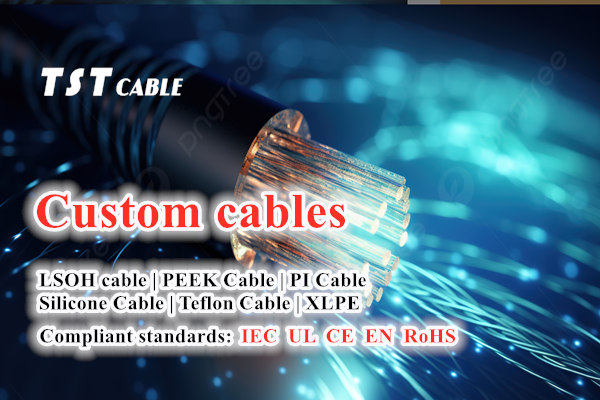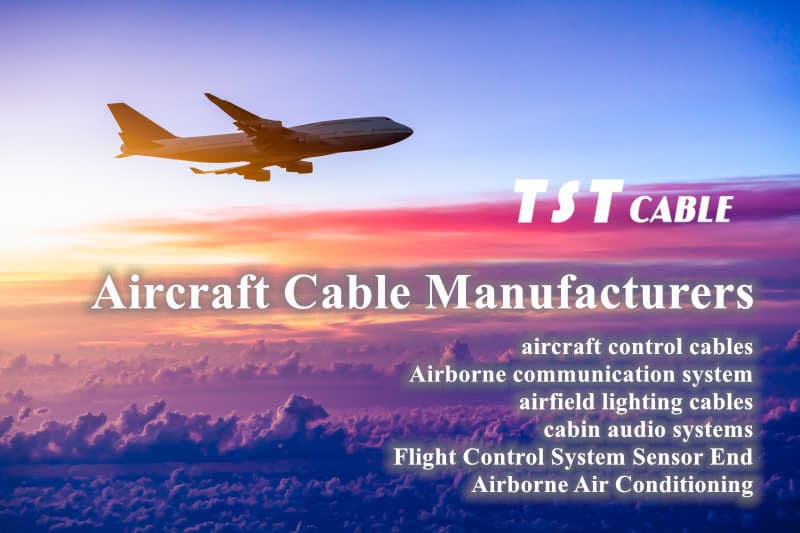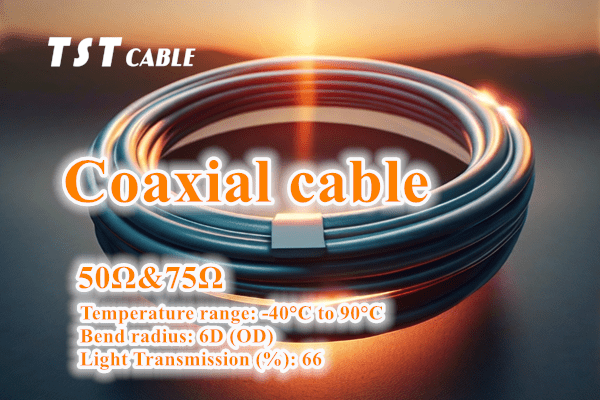What is a high-speed cable?

High-speed cable (Direct Attach Cable, referred to as DAC) is a cable solution specially designed for short-distance, high-speed data transmission. It is mainly used in data centers, high-performance computing environments, storage area networks (SANs), and connections between switches and servers. It usually uses copper conductors, but in some cases optical fibers are also used to accommodate longer distances and higher data rate requirements. The frequency range of high-speed cables is usually between 1 GHz and 40 GHz. These cables have extremely low signal loss and noise, and can maintain signal integrity and stability in the high frequency range. High-speed cables are widely used in computers, communications, industrial and medical equipment. As the “nerve” connecting modern data centers and high-performance computing systems, the continuous advancement of high-speed cable technology is of great significance to promoting the development of the information technology industry. Next, TST cables, a high-speed cable manufacturer, will give you a detailed introduction to their characteristics, applications and development trends.
Why use high-speed cables?
High-speed cables play an important role in modern society. They are able to transmit high-speed digital signals and improve the efficiency and quality of data transmission.
High performance: High-speed cables use high-quality materials and construction to provide low signal loss and low latency, ensuring efficient and accurate data transmission.
Low cost: Compared with solutions using optical modules and optical fibers, high-speed cables provide a more economical option over short distances because they do not require additional optical modules or lasers.
Low power consumption: Since no photoelectric conversion is required, high-speed cables have low power consumption, which helps save energy and reduce emissions in data centers.
Easy to install and maintain: The installation of high-speed cables is relatively simple, and no complex optical path alignment is required, which reduces the complexity of maintenance and troubleshooting.
High density: In a limited space, high-speed cables can achieve high-density connections and are suitable for high-density wiring environments.
Construction of high-speed cables
High-speed cables are usually composed of silver-plated conductors and foamed insulated core wires, using line pair shielding and total shielding to enhance anti-interference and signal integrity. The ends of these cables are equipped with corresponding connectors, such as QSFP+, SFP+, CFP, etc., to connect to the ports of network equipment.
Classification of high-speed cables
There are many types of high-speed cables, including coaxial cables, twisted pair cables, optical fibers, etc.
Coaxial cable
Coaxial cable is a cable consisting of an inner conductor, an insulating layer, an outer conductor, and an outer insulating layer. The inner conductor and the outer conductor are separated by an insulating layer to reduce signal interference. Coaxial cable is often used to transmit high-frequency signals, such as television, cable modems, and computer networks.
The advantage of coaxial cable is that it can transmit high-frequency signals with stable signal quality and less interference. The disadvantage is that it is relatively thick, bulky, and has high installation and maintenance costs.
Twisted pair
Twisted pair is a cable formed by two insulated wires twisted together. Both wires are identical, but they are intertwined when transmitting signals. This structure reduces signal interference and improves signal quality. Twisted pair is often used to transmit data signals, such as telephone, local area network, and wide area network.
The advantage of twisted pair is that it is cheap, flexible, and easy to install and maintain. The disadvantage is that it cannot transmit high-frequency signals, and the signal quality deteriorates the longer the distance.
Fiber optic
Fiber optic is a long, thin tube made of glass or plastic that is used to transmit light signals. Fiber optic is often used to transmit high-speed data signals, such as Internet and telephone signals.
The advantage of optical fiber is that it can transmit high-speed data signals with stable signal quality and less interference. The disadvantage is that it is relatively fragile, easily damaged, and has high installation and maintenance costs.
Classification and standard interface of high-speed cables
High-speed cables can be mainly divided into two categories according to their internal structure and transmission medium: copper cables and optical fiber cables.
Copper cable high-speed cable:
This type of cable is usually made of multiple strands of fine copper wires twisted together, with high conductivity and signal transmission capability. In order to reduce electromagnetic interference (EMI) and crosstalk, copper cable high-speed cables usually adopt a shielded design, including line pair shielding and total shielding.
Standard interfaces include SFP+, QSFP+, QSFP28, etc., supporting data rates ranging from 10Gb/s to 100Gb/s. With the advancement of technology, interfaces that support higher rates have emerged, such as QSFP-DD and OSFP, which can reach 200Gb/s or even 400Gb/s.
Fiber optic high-speed cable:
When the transmission distance increases or the bandwidth requirement is higher, fiber optic high-speed cable becomes a better choice. Fiber optic cables use light as a signal carrier, with the advantages of extremely low signal attenuation and almost no electromagnetic interference.
Fiber optic high-speed cables are divided into two types: single-mode and multi-mode. Multimode fiber is suitable for shorter distances (usually within 300 meters), while single-mode fiber is used for longer distance transmission.
Common fiber interfaces include MPO/MTP (multi-core fiber connector), LC, SC, etc.
Performance indicators of high-speed cables
The performance indicators of high-speed cables usually include the following aspects:
Bandwidth: The bandwidth of a high-speed cable determines how much data it can transmit. Bandwidth is usually described in bits per second (bps).
Delay: The delay of a high-speed cable refers to the time required from the sender to send data to the receiver to receive the data. Delay is usually described in milliseconds (ms).
Jitter: The jitter of a high-speed cable refers to the time instability of data transmission, which may cause delays or loss of data packets. Jitter is usually described in standard deviation (ms).
Anti-interference ability: The anti-interference ability of a high-speed cable refers to its ability to maintain stable transmission performance in an interference environment. Cables with high anti-interference ability can stably transmit data in environments such as strong electromagnetic interference and electromagnetic shielding.
Application of high-speed cables:
Internal connection in data centers: connect servers, switches, storage devices, etc. to achieve high-speed data exchange.
High-performance computing (HPC) clusters: In supercomputers or large-scale parallel computing systems, high-speed cables are used for node-to-node communication.
Storage area networks (SANs): In SAN architectures, high-speed cables are used to connect storage devices and hosts.
Network equipment: Such as core routers, switches, etc., high-speed cables are used for internal interconnection between devices.
Future development trends of high-speed cable technology
High-speed cables are an efficient, economical, and environmentally friendly short-distance connection solution. As data transmission rates continue to increase, high-speed cables are also evolving to adapt to new technologies and standards.
Higher data transmission rates: As data centers and high-performance computing continue to grow in bandwidth demand, high-speed cables will develop in the direction of supporting higher data transmission rates. Future high-speed cables may support data transmission of more than 1Tb/s.
Smaller size and weight: In order to adapt to the increasingly compact data center layout, high-speed cables will pursue smaller size and lighter weight to improve wiring density and flexibility.
Intelligence and adaptability: Future high-speed cables may integrate intelligent monitoring and adaptive adjustment functions, which can monitor signal quality in real time and automatically adjust transmission parameters to optimize performance and extend service life.
Green energy and sustainability: As global awareness of environmental protection increases, the production and use of high-speed cables will pay more attention to energy efficiency and sustainability, using recyclable materials and low-power designs.
Cooperate with TST CABLES to customize high-quality high-speed cables
Chinese cable manufacturer TST CABLES relies on cutting-edge technology to create high-speed cables with ingenuity, leading a new era of data transmission. Low latency and high bandwidth create information highways, making every bit accurate and accurate, and every connection is green, energy-saving, safe and reliable.
“Made in China 2025” emphasizes innovation-driven and industrial upgrading, encourages enterprises to increase R&D investment, and improve product quality and technical content. This puts higher demands on the cable industry, and also brings opportunities for global industrial upgrading and market expansion. With the continuous emergence of new technologies and changes in application requirements, as a pioneer in high-temperature cable companies, TST CABLES will continue to lead industry innovation and develop products that meet high standards and high performance requirements to adapt to the global challenges and opportunities brought by the “Made in China 2025” strategy to meet the needs of future computing and communications. If you want to learn more about high-speed cables, copper cables, coaxial cables, twisted pairs, optical cables, or place a sample order, please feel free to contact us by email or phone.
Also available in:
English




